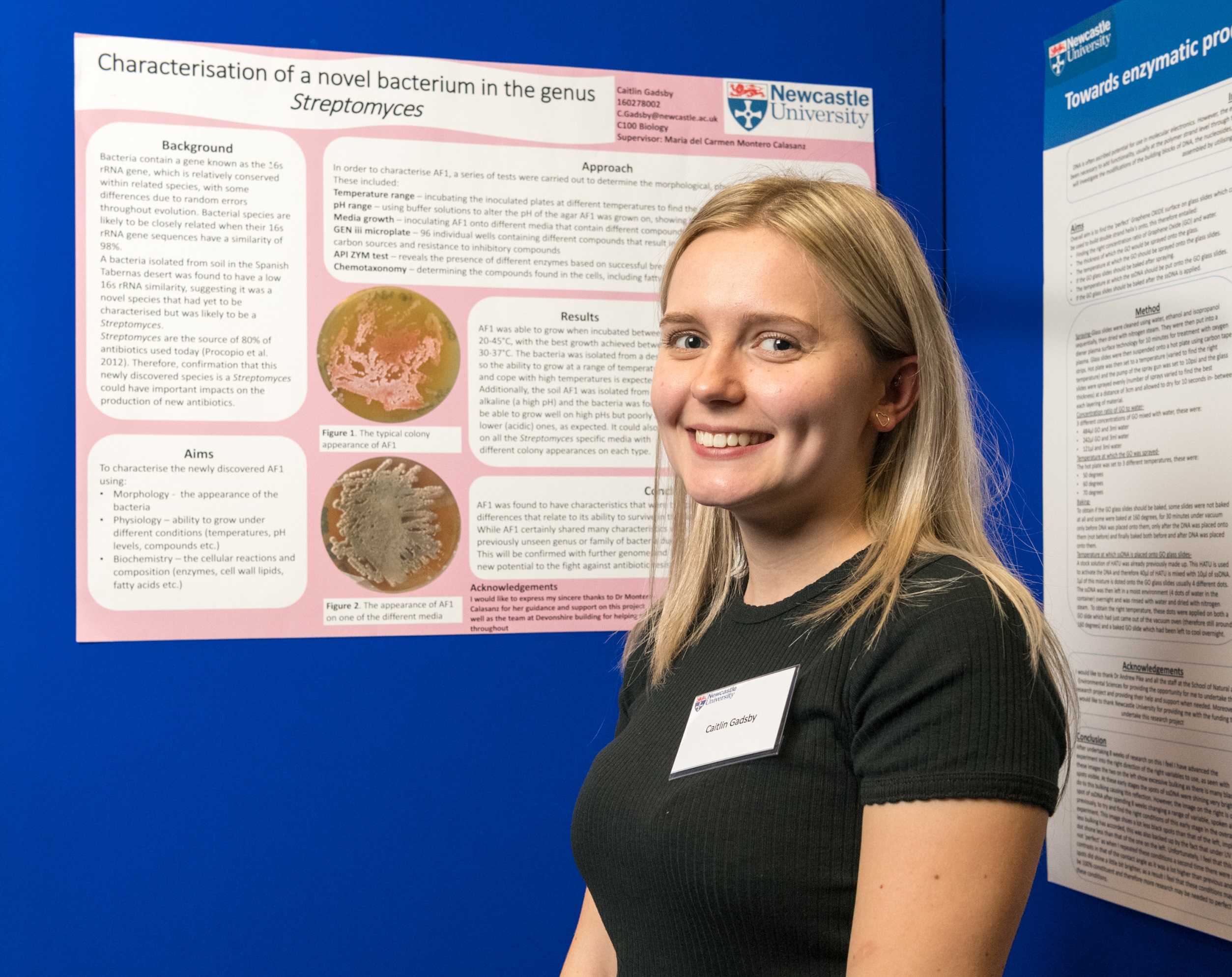2018 participants
 Caitlin Gadsby
Caitlin Gadsby
A bacteria isolated from the Spanish Tabernas desert was found to have a low genetic similarity to other bacteria, suggesting it was a newly discovered species. The genetics also revealed that it was likely to be a Streptomyces, a genus of bacteria known for the production of antibacterial compounds that constitute the majority of antibiotics. The discovery of new Streptomyces is therefore becoming increasingly important in the fight against antibiotic resistant bacteria.
This research was aimed at characterising the isolate, known as AF1, using morphological, physiological and biochemical properties. Morphology includes the appearance of the bacteria and its cellular characteristics, physiology involves the ability to grow under specific conditions (differing temperatures, pHs, substrates etc.) and biochemistry applies to the cellular reactions, components and enzymes. This allows the understanding of similarities and differences between a novel species and those it is believed to be related to, aiding in the taxonomic positioning.
Funded by: Newcastle University
Project Supervisor: Dr Maria del Carmen Montero-Calasanz
